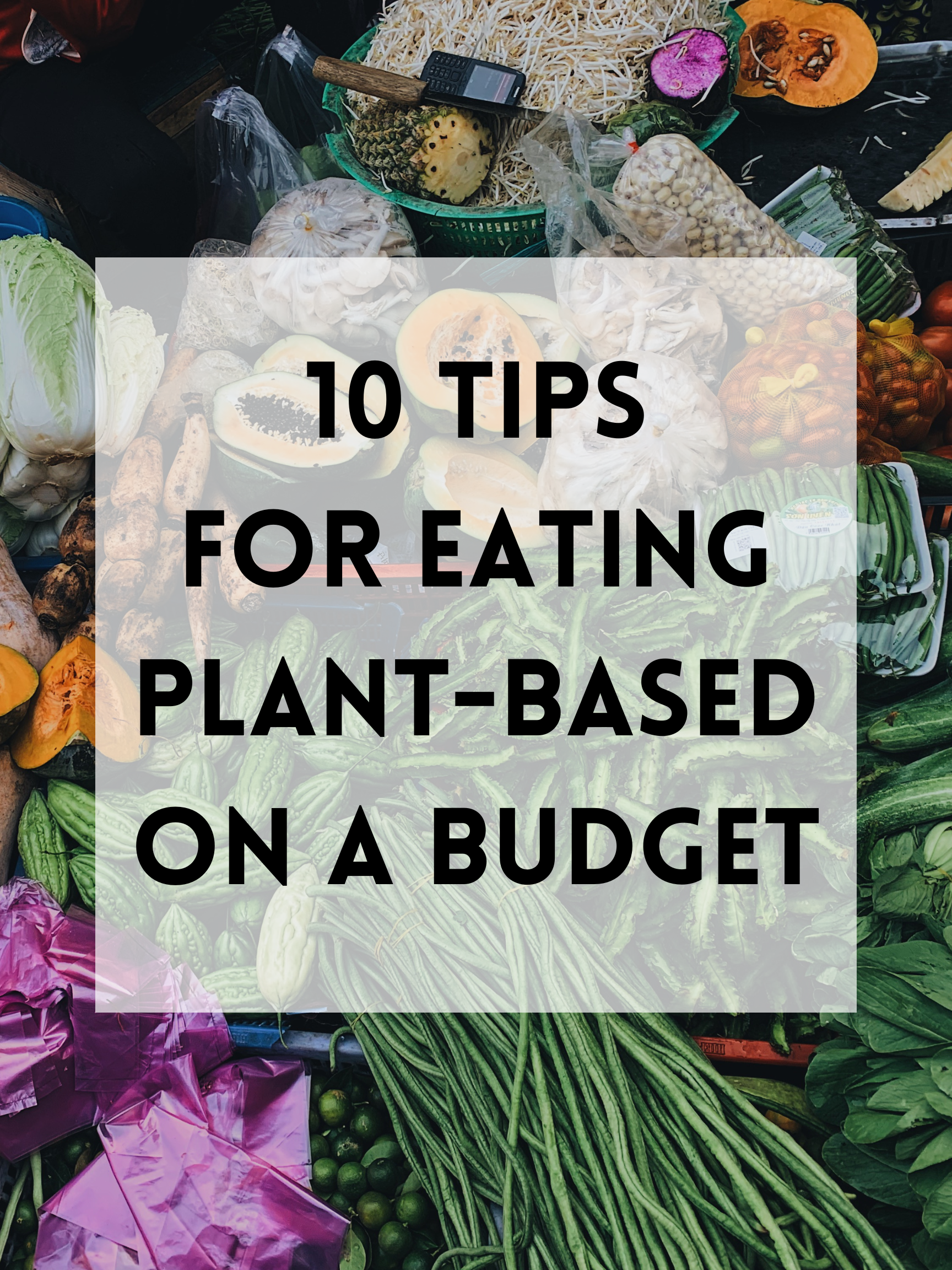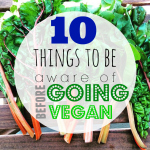Money-saving tips, yay! I love writing about this stuff because it not only pertains to my life 100%, but I think a lot of people are interested in this sort of topic – especially those who are new to a vegan or plant-based diet.
It’s not hard to remain on a tight budget when you eat and cook plant-based/vegan (and I have an eBook to help with that!) I promise. After letting go of my (very much missed) salary to stay home with our kids, we had to make changes in how we shopped and where our money went (naturally). And we’re making it work. And I’ve never been more confident in our decision. These are some of the tips I have in the food department.
#1: Focus on cheap vegan foods. Truth be told, there are A LOT of cheap vegan ingredients. Here’s an extensive list of frugal foods to get you started, as well as meals to make from this list.
#2: Shop seasonal produce. I always focus on what is in season because it tends to be much cheaper. When I make my grocery list, I usually never add any fruits/veggies on it unless I am making something specific. I go in with an open mind and really assess all pricing before choosing what we get that week. If grapes are usually 99 cents a lb, I am in. But sometimes they creep up to $1.99 or even 2.49 a lb and in that case, nope. Same goes with zucchini a lot of the time. Would I love avocado every single week? Yes! But the price is outrageous at times, so some weeks, we are sans avocado. There are items that are pretty constant, but beware of the produce that fluctuates in price and be choosy. Your list shouldn’t be the exact same from week-to-week.
#3: Buy dried beans/legumes vs. canned. I will usually have a 2-3 cans of beans on hand for those “in a pinch” moments but we always prefer dried beans. As long as you can remember to soak the night before (set a phone reminder if you need to) you can do pretty much anything with them. I love to prepare in the crock pot (recipe here) so I can dump everything in and forget about them until later. Your money goes a long way when you buy dried!
#4: Focus on budget-friendly proteins. There’s a lot of vegan protein talk all the time, but I’m not here to talk about your intake… let’s talk about price. A Beyond Meat burger is going to cost a lot more for 1 meal than a bag of lentils that can extend to multiple meals. Same with dried beans (see above). Instead of buying mock chicken to make a chicken salad, use some chickpeas or white beans (recipe here). There are plenty of ways to get your protein that does not involve a mock meat product. You can even make your own high-protein veggie burgers!
#5. Don’t focus on superfoods. I watch a lot of vegan YouTubers and read a lot of posts that focus on superfoods – think green powders, wheatgrass, goji berries, spirulina, acai packs, maca powder, etc. These all have a place, but if you are on a budget, it can add up very quickly to purchase on a regular basis. Eating whole foods is superfood enough, honestly. I feel like the only exceptions for me personally would be flaxseed and chia seeds because I use these for baking and they go a long way.
Instead of acai packs, just grab a bulk bag of frozen blueberries. Instead of green powders, just add extra kale to your smoothies. I know these things would be nice to have around, especially if you are partial to them, but they are not necessary if it’s not in the current budget. This was the first category of foods I cut back on when we started a stricter budget and it has helped immensely.
#6: On that same note, don’t focus on specialty items. By specialty items, I mean mock meats, mock cheese, vegan-specific dips, vegan bagged snacks, etc. Again, there is a time and place and sometimes we will choose 1-2 per week to treat ourselves with, but I don’t go crazy buying these things. Instead of mock meats, we get creative with tempeh and tofu. Instead of special cheesy products, we grab a bulk bag of cashews to make our own cheesy sauces and dips. Instead of packaged vegan snacks, we opt for popcorn kernels and fruit. It’s not only better for your wallet, but for your waist and overall health. If you love these kinds of products, try giving yourself 1-2 choices each week.
#7: Try to forget about branding. We get pretty caught up in branding sometimes. We believe we might be sacrificing something if we buy the generic brand. This won’t go for everything, but a good idea of what I am talking about is peanut butter. There are a lot of “special” peanut butter brands out there… some that are just way more expensive than peanut butter needs to be. You know what you need to look for? A label that reads like this: Ingredients: dry roasted peanuts
Sometimes it may also list salt. Okay, two ingredients. The end. That’s probably a good peanut butter to buy, name brand or generic. It’s the long lists you want to be weary of, but it certainly does not have to be Justin’s Peanut Butter or even Earth Balance Peanut Butter. While I love both of these brands to pieces (trust me, they are great), they are not the cheapest option for us at the moment. Once our girls are in school and I am back to work someday, we can upgrade our PB game, but for now… this is what is working for our budget. If something isn’t name brand but the ingredients are identical, chances are it is a good bet.
#8: Browse the frozen produce. Not everything has to be fresh all the time, especially when it comes to frozen fruit and vegetables. Truth be told, these foods are harvest when ripe and then frozen, so you are still getting nutritional value here. It may not be as tasty as fresh, but it is not bad for you and there’s always a place in your kitchen for frozen. Frozen peas, green beans, and broccoli work awesome in stir fry. Frozen berries, cherries, and peaches are lifesavers in smoothies. They will always be cheaper than fresh and have a longer shelf life. I find this tip really helpful in the winter months when our produce section is not as lively and prices shoot up.
#9: Freeze leftovers. If you make more soup than you need for the week or even a sauce, freeze for later. Sometimes I’ll make way too much Italian gravy than necessary, so into the freezer it goes for later. Not only are you saving instead of wasting, but will be so happy when you are too tired to cook something and have a meal ready to defrost.
#10: Make cheap recipes. Cheap doesn’t mean boring. It doesn’t mean bland. It means you are making frugal foods the star of your meal and building around that. There are so many budget-friendly dinners (i focus on dinners, because these tend to be the most expensive to make). Some of my favorite frugal dishes for the week are: lentil stew, lemon chickpea pasta, lazy pad thai, and escarole and beans.
** Bonus tip: Drink water from the tap. Invest in a water filter and make water the official drink of your home. If you came to my house, you’d only see non-dairy milk in our fridge in terms of beverages. Sometimes there may be the occasional seltzer water (also cheap) or orange juice. But other than than, we do not buy fancy beverages. Water is best for you, anyway!
What are some of the ways that you save on your grocery bill? I hope that even one or two of these were new to you.
For more information on how to save money on a plant-based diet, download my eBook: My Budget-Friendly Plant-Based Kitchen.
From grocery lists to quick tips to recipes, you’ll find 90+ pages of inspiration.


